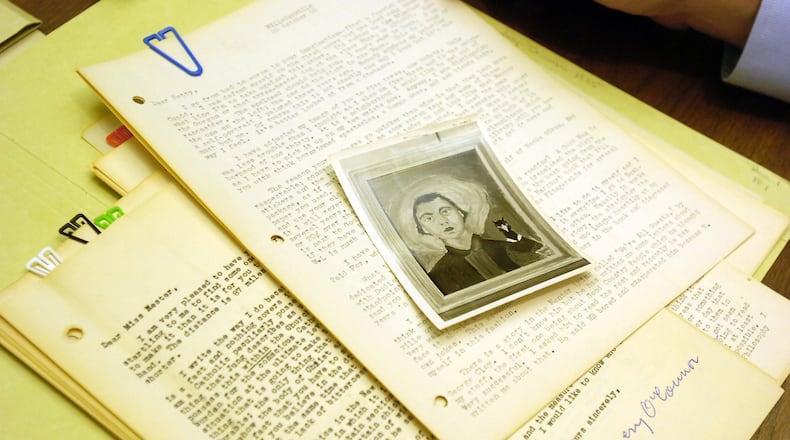Published Oct. 7, 2014
The letters are old now, but they still crackle with life. A young woman shares her thoughts as she matures into a giant of American literature.
Now, those letters, as well as manuscripts, photos and other documents that belonged to Flannery O’Connor, are the property of Emory University. The university announced their acquisition Tuesday.
The archive is a “singular acquisition,” said Rosemary Magee, director of Emory’s Manuscript, Archives and Rare Book Library. “It’s extremely important to understanding one of the major literary influences of our time.”
O'Connor was 39 when she succumbed to lupus in 1964. She lived the latter part of her life at Andalusia, a farm just outside Milledgeville. Georgia College & State University in Milledgeville, from which the author graduated in 1945, acquired some of O'Connor's papers and other items in 1970.
The rest of O’Connor’s papers and other items remained in the Mary Flannery O’Connor Charitable Trust until Emory acquired them. The Emory collection filled 30 cardboard boxes.
It’s a pity the Milledgeville university didn’t get the rest of O’Connor’s effects, said O’Connor scholar Sarah Gordon. A retired Georgia College & State University English professor, Gordon chaired the first O’Connor symposium in 1974. The university still hosts the annual gatherings.
“Georgia College is very disappointed not to get them,” Gordon said. “We’re just glad that they’re out of the house and taken care of.”
The Emory archive consists of correspondence, artwork — O’Connor could draw as well as write — journals and notebooks. Also included in the collection are news clippings, legal and financial records, and awards.
Some of the most compelling papers, said Magee, are the letters from O’Connor to her mother, Regina Cline. They include the author’s musings while she was enrolled at the University of Iowa’s writing program and afterward, when she was writing at the New York artist’s colony Yaddo. The correspondence also includes letters from O’Connor to other writers, including Louise Abbot, Cecil Dawkins, Caroline Gordon and John Crowe Ransom and Allen Tate.
“You can see the daily life of a young person,” Magee said. “You see her coming to terms with herself as a writer. She feels compelled to write, to write stories, to write fiction.”
She answered that compulsion, too. Her first novel, “Wise Blood,” was published in 1952. A second, “The Violent Bear It Away,” bowed in 1960. Other works include “A Good Man Is Hard to Find and Other Stories” (1955) and “Everything That Rises Must Converge” (1965).
The O'Connor archive is not MARBL's first coup. The university library also has papers from Nobel laureate Seamus Haney, British poet laureate Ted Hughes, writers Alice Walker and Salmon Rushdie, editor Ralph McGill and others.
The university plans to make selections from the archive available to scholars. O’Connor biographer Bill Sessions is waiting to take a close look at them. He and O’Connor were friends, as well as correspondents.
“It’s vast, and it’s something people will be using,” he said. “People will be using it for centuries.”
About the Author
Keep Reading
The Latest
Featured



